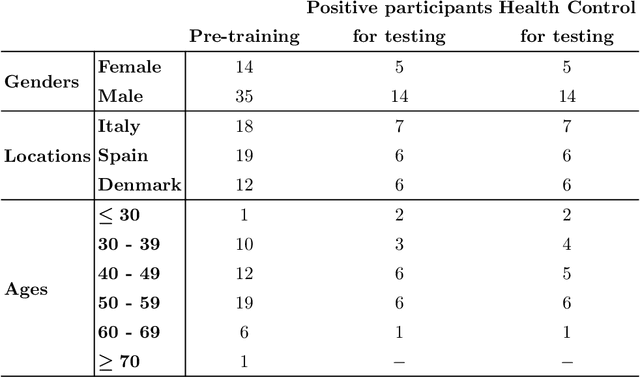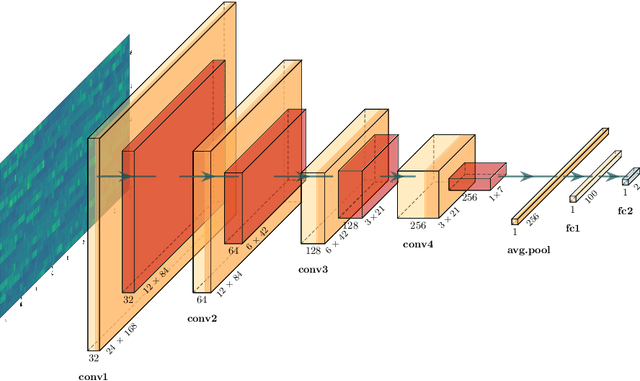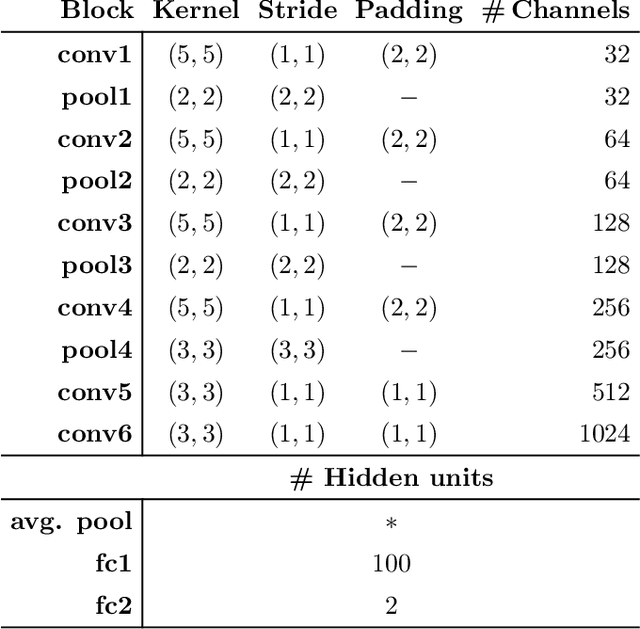Raquel Bailón
Obstructive Sleep Apnea Characterization: A Multimodal Cross-Recurrence-Based Approach for Investigating Atrial Fibrillation
Apr 30, 2025Abstract:Obstructive sleep apnea (OSA) is believed to contribute significantly to atrial fibrillation (AF) development in certain patients. Recent studies indicate a rising risk of AF with increasing OSA severity. However, the commonly used apnea-hypopnea index in clinical practice may not adequately account for the potential cardiovascular risks associated with OSA. (1) Objective: to propose and explore a novel method for assessing OSA severity considering potential connection to cardiac arrhythmias. (2) Method: the approach utilizes cross-recurrence features to characterize OSA and AF by considering the relationships among oxygen desaturation, pulse arrival time, and heart-beat intervals. Multinomial logistic regression models were trained to predict four levels of OSA severity and four groups related to heart rhythm issues. The rank biserial correlation coefficient, rrb, was used to estimate effect size for statistical analysis. The investigation was conducted using the MESA database, which includes polysomnography data from 2055 subjects. (3) Results: a derived cross-recurrence-based index showed a significant association with a higher OSA severity (p < 0.01) and the presence of AF (p < 0.01). Additionally, the proposed index had a significantly larger effect, rrb, than the conventional apnea-hypopnea index in differentiating increasingly severe heart rhythm issue groups: 0.14 > 0.06, 0.33 > 0.10, and 0.41 > 0.07. (4) Significance: the proposed method holds relevance as a supplementary diagnostic tool for assessing the authentic state of sleep apnea in clinical practice.
Fitbeat: COVID-19 Estimation based on Wristband Heart Rate
Apr 19, 2021



Abstract:This study investigates the potential of deep learning methods to identify individuals with suspected COVID-19 infection using remotely collected heart-rate data. The study utilises data from the ongoing EU IMI RADAR-CNS research project that is investigating the feasibility of wearable devices and smart phones to monitor individuals with multiple sclerosis (MS), depression or epilepsy. Aspart of the project protocol, heart-rate data was collected from participants using a Fitbit wristband. The presence of COVID-19 in the cohort in this work was either confirmed through a positive swab test, or inferred through the self-reporting of a combination of symptoms including fever, respiratory symptoms, loss of smell or taste, tiredness and gastrointestinal symptoms. Experimental results indicate that our proposed contrastive convolutional auto-encoder (contrastive CAE), i. e., a combined architecture of an auto-encoder and contrastive loss, outperforms a conventional convolutional neural network (CNN), as well as a convolutional auto-encoder (CAE) without using contrastive loss. Our final contrastive CAE achieves 95.3% unweighted average recall, 86.4% precision, anF1 measure of 88.2%, a sensitivity of 100% and a specificity of 90.6% on a testset of 19 participants with MS who reported symptoms of COVID-19. Each of these participants was paired with a participant with MS with no COVID-19 symptoms.
 Add to Chrome
Add to Chrome Add to Firefox
Add to Firefox Add to Edge
Add to Edge